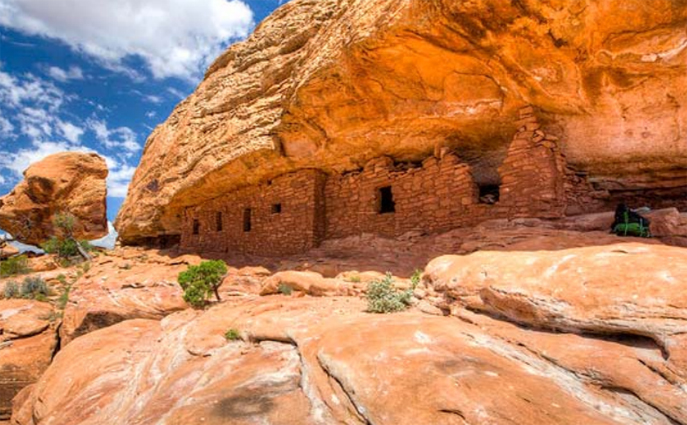Since the days of John Muir’s campaign to preserve Yosemite, the Sierra Club has prided itself on protecting our nation’s wild places for the enjoyment of future generations. We have a duty to leave a robust wild legacy for our children, and to do so we must leave our beloved public lands and waters unspoiled by oil and gas wells, mines, logging, roads and other development. President Trump’s recent “Executive Order on the Review of Designations under the Antiquities Act” is a direct assault on these values.
The Antiquities Act was signed into law by Teddy Roosevelt in 1906. It empowers the president to create new national monuments in order to protect areas of ecological, cultural, archaeological, and historic significance. Since then, 16 presidents have designated 157 national monuments, including a diverse array of landmarks like the Statue of Liberty, the Sonoran Desert in Arizona, Devils Tower in Wyoming, Gila Cliff Dwellings in New Mexico, Scott’s Bluff in Nebraska, Washington’s San Juan Islands, vast areas of the Pacific and Atlantic Oceans, California’s Giant Sequoias, and even Muir Woods. What these places all have in common is their contribution to our individual and collective well-being, whether it is providing an escape into nature, a visit to ancestral homes and sacred sites for Indigenous peoples, or providing economic support for the surrounding community.
Trump’s Executive Order, however, directs the Secretary of the Department of Interior, Ryan Zinke, to review 27 monuments designated since 1996 (when President Clinton designated Grand Staircase-Escalante), with an eye towards reducing their size or potentially eliminating them altogether. The full list of monuments to be reviewed can be found here. The Order is framed as a defense of States’ rights and a bold move toward energy independence and economic growth; but make no mistakes about it: this Executive Order is an assault on our public lands and our national culture.
When Donald Trump says this Executive Order is intended for the public’s benefit, what he really means is he intends to make these lands available to extractive industries and reward the politicians who are among the few still standing behind him. While Trump claims this Executive Order is meant to benefit the interests of local and tribal governments, this is a smoke screen for his determination to undo President Obama’s environmental legacy.
This is particularly evident in the conflict over the 1,353,000 acre Bears Ears’ National Monument established by Obama in southeast Utah during the final days of his presidency. Bears Ears is singled out in the Order for expedited treatment in Zinke’s “review,” which seems to have a predetermined outcome benefitting oil and gas development. Another example is the 87,563 acre Katahadin Woods and Waters in Maine, which President Obama designated to protect and preserve private land that was donated to the federal government for that purpose. The people of the area were solidly in favor of protecting this area for posterity, while Trump’s attack seems to favor no one but the zealots opposed to any expansion of federal land.
Besides harming our nation’s economic, physical, spiritual, and emotional well-being, Trump’s scheme is of questionable legality. There is little legal authority on the subject – since no other President has disrespected the legacy of his predecessors in this way – but while Congress gave presidents the power to establish monuments through the Antiquities Act, it did not give presidents the power to abolish them. Trump is stepping into the realm of Congress’s powers and acting beyond his own – his action is ultra vires in legal terms. (A good article discussing these issues can be found here.) As soon as Secretary Zinke issues his recommendation and President Trump acts on it, litigation on several fronts is likely. The federal courts will have the final say on whether this is allowed, or whether it is another case of executive over-reach by this disastrous administration.
